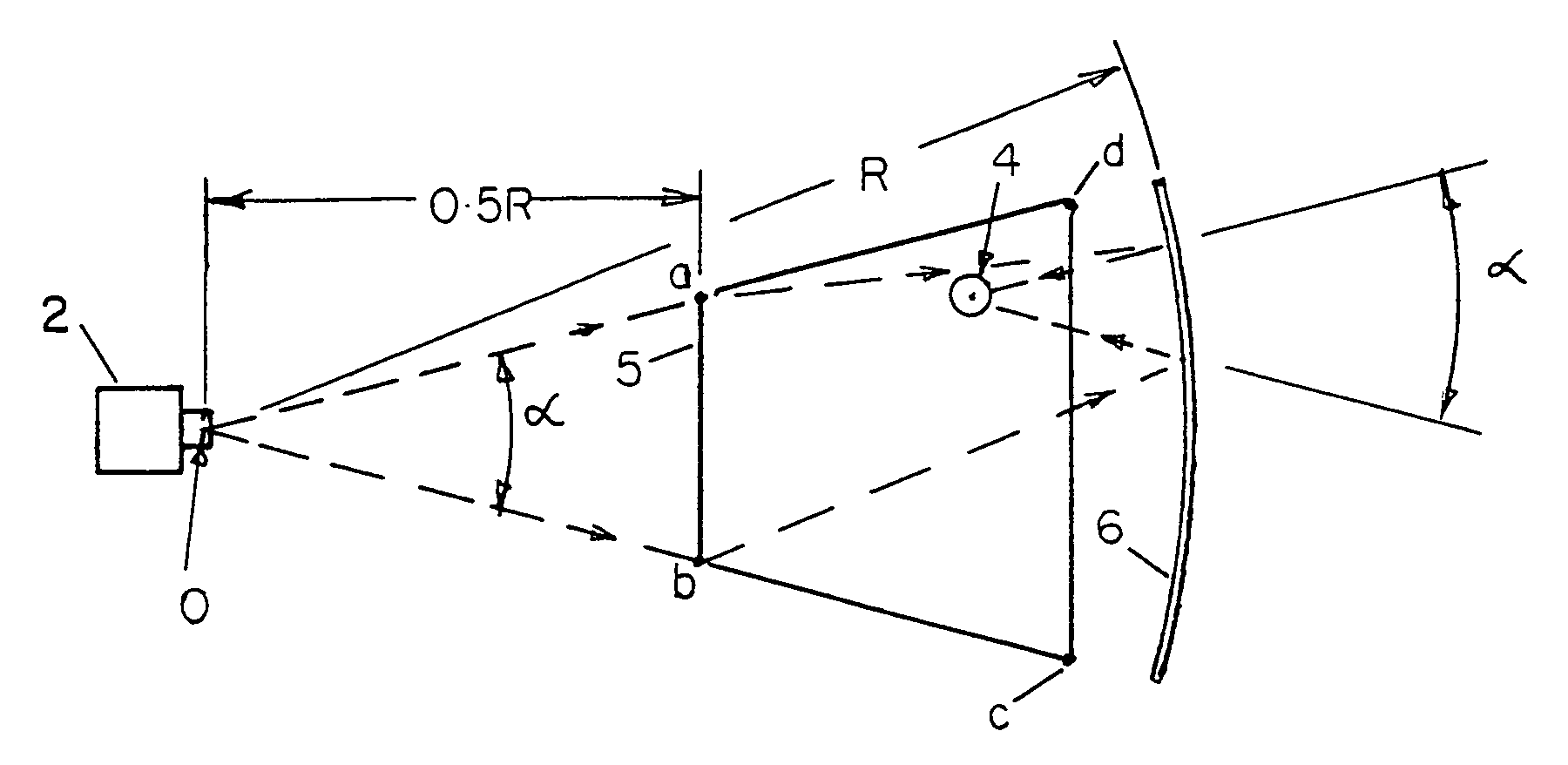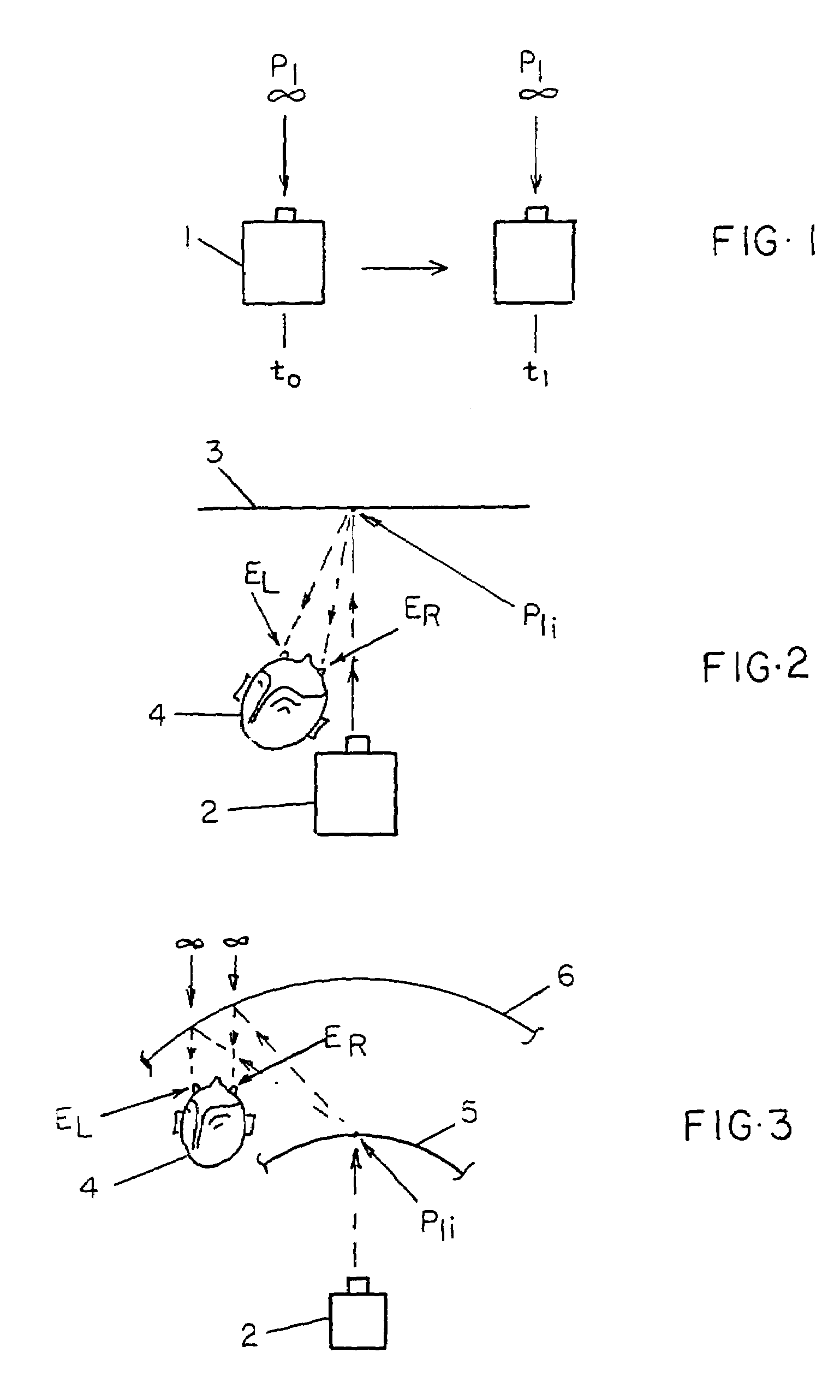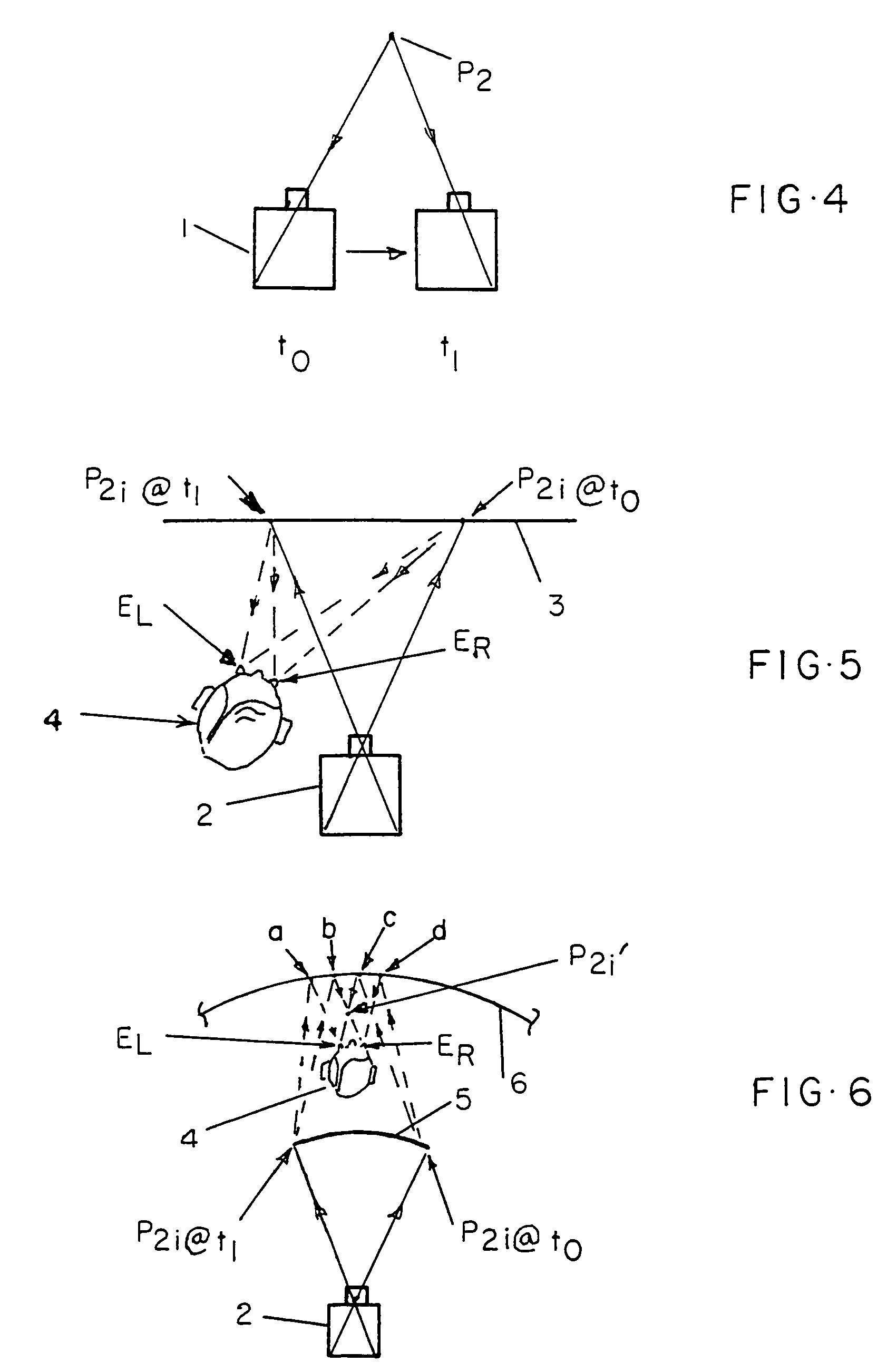3D motion picture theatre
- Summary
- Abstract
- Description
- Claims
- Application Information
AI Technical Summary
Benefits of technology
Problems solved by technology
Method used
Image
Examples
Embodiment Construction
[0077]FIG. 1 shows a movie camera 1 (using film or electronic storage media) moving with a component of horizontal relative motion (between camera and scene) while capturing views of a scene at great distances. P1 represents an object point in the scene at infinity. Camera 1 is shown at two points in time designated by time t0 and time t1 at which times scene point P1 is recorded on the storage media used in camera 1. The views thus captured become images in the successive embodiments of the playback equipment discussed in the remainder of this specification.
[0078]FIG. 2 shows the far image viewing geometry in a plan view of a conventional movie projection system (using film or electronic storage media) where the view captured in FIG. 1 is projected by projector 2 onto reflective screen 3 and image point P1i is viewed by observer 4. Observer 4 sees P1i on screen 3 with left eye EL and right eye ER and the sight lines from eyes to screen image are not parallel as they were for camera...
PUM
 Login to View More
Login to View More Abstract
Description
Claims
Application Information
 Login to View More
Login to View More - R&D
- Intellectual Property
- Life Sciences
- Materials
- Tech Scout
- Unparalleled Data Quality
- Higher Quality Content
- 60% Fewer Hallucinations
Browse by: Latest US Patents, China's latest patents, Technical Efficacy Thesaurus, Application Domain, Technology Topic, Popular Technical Reports.
© 2025 PatSnap. All rights reserved.Legal|Privacy policy|Modern Slavery Act Transparency Statement|Sitemap|About US| Contact US: help@patsnap.com



